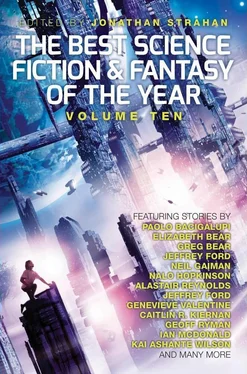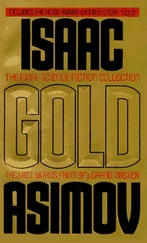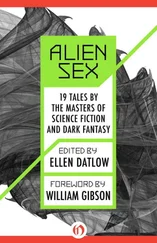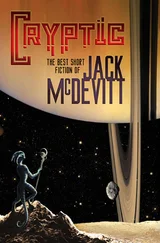Beneath each camera is a heavy grey digital control box. The boxes contain microprocessor boards, emergency batteries, and the blue plastic rectangles of their internal ethernet modules, flickering with yellow and red LEDs. The boxes are supposedly weatherproof but the rain usually finds a way into them. Like the motors, there have been some failures of the circuit board, and our spares supplies are running low.
About one in five of the stations have more equipment. On these units we also included laser/radar rangefinders and Doppler velocity recorders. These in turn require extra processors and batteries in the control boxes, which is yet more to go wrong.
The effort is worth it, though.
The equipment allows us to track the instantaneous vectors of anything up to two hundred and fifty thousand birds, perhaps even half a million, in a single compact formation. Our spatial/temporal resolution is sufficient to determine wing movements down to the level of specific feather groups. At the same time we also gather data on the attentional shifts implied by eye and head tracking of individual birds.
The human eyes see a blurring of identities, birds becoming the indistinguishable, amorphous elements of some larger whole. The cameras and computers see through all of that. I know the science, I know the algorithms, I know our data-carrying capacity. All the same, I am still quietly astonished that we can do this.
When the cameras are checked, which can take anywhere between three and six hours, I have one final inspection to perform. I drive to the wind turbine, and make a visual inspection of the high grey tower and the swooping blades. More often than not there is nothing to be done. The blades turn, the power flows, our electrical and computer systems work as they are meant to.
The rest is down to the birds.
IT’S ODD, REALLY, but there are times when I find even the hut a little too closed-in and oppressive for my tastes. Sometimes I just stop the 4WD out here, wind the window down, and watch the light change over the marsh. I like it best when the day is overcast, the clouds sagging low over the trees and bushes of the marsh, their greyness relieved only by a bold supercilial swipe of pale yellow above the horizon. Birds come and go, but it’s too early for the roosting. I watch herons, curlews, reed warblers – sometimes even the slow, methodical patrol of our resident marsh harrier, quartering the ground with the ruthless precision of a surveillance drone.
Beyond the birds, the only constancy is the regular swoosh of the turbine blades.
It’s a good time to catch up on work or reading.
I pull laser-printed pages from the unruly nest of the glove compartment, along with tissues, cough sweets, empty medicine packets, a scuffed CD without a case. I rest a stiff-backed road atlas on the steering wheel, so that I can write on the pages.
I’ve already marked up certain problematic passages in yellow highlighter. Now I use a finer pen to scribble more detailed notes in the margins. Eventually I’ll condense these notes into a short email to the journal editor. In turn they’ll forward them on to the author of the paper I am refereeing.
This is how it works. I’m engaged in a struggle with my own anonymous referee, half-convinced that they’ve got it in for me, while at the same time trying to be just as nit-picking and difficult for this other author. Doubtless they feel just as irritated by me, as I am irritated with my own referee. But from my end, I know that there’s nothing personal in it. I just want the work to be as good as it can be, the arguments as lucid, the analysis as rigorous. So what if I know the lead author, and don’t particularly care for her? I can rise above that.
I hold one of the sheets up to the yellowing sky, so that the band of light pushes through the highlit yellow passages. I read back my own scrawl in the margins:
Sloppy handling of the synthetic correlation function – doesn’t inspire confidence in rest of analysis.
Am I being too harsh with them?
Perhaps. But the we’ve all been through this mill.
STARLINGS GATHER, ARRIVING from all directions, concentrating in the air above the copse of trees and bushes near the middle of the study area. They come in small numbers, as individuals or in flocks of a few dozen, before falling into the greater mass. There is no exact threshold at which the concentration of birds becomes a recognisable murmuration, but it needs at least a few thousand before the form begins to emerge as a distinct phenomenon in its own right, with its swooping, gyring, folding cohesiveness – a kind of living membrane in the sky.
Meanwhile, our instruments record. One hundred parametric data points per bird per millisecond, on average, or upwards of fifty gigabytes of data for the whole murmuration. Since the murmuration may persist for several tens of minutes, our total data cube for the whole observation may contain more than thirty terabytes of data, and a petabyte is not exceptional. We use some of the same data-handling and compression routines as the particle physicists in CERN, with their need to track millions of microscopic interaction events. They are tracking tiny bundles of energy, mass, spin and charge. We are tracking warm, feathery bodies with hearts and wings and twitchy central nervous systems!
All of it is physics, though, whether you are studying starlings or quarks.
On my workstation I sift through slices of the data with tracker-wheels and mouse glides.
I graph up a diagram of the murmuration at a moment in time, from an arbitrary viewing angle. It is a smear-shaped mass of tiny dots, like a pixelated thumbprint. On the edges of the murmuration the birds are easily distinguishable. Closer to the core the dots crowd over each other, forming gradients of increasing concentration, the birds packing together with an almost Escher-like density. Confronted with those black folds and ridges, it is hard not to think of the birds as blending together, clotting into a suspended, gravity-defying whole.
I mouse click and each dot becomes a line. Now the smear is a bristly mass, like the pattern formed by iron filings in the presence of a magnetic field. These are the instantaneous vectors for each bird – the direction and speed in which they are moving.
We know from previous studies that each starling has a direct influence – and is in turn influenced by – about seven neighbours. We can verify this with the vector plots, tracking the change in direction of a particular bird, and then noting the immediate response of its neighbours. But if that were the limit of the bird’s influence, the murmuration would be sluggish to respond to an outside factor, such as the arrival of a sparrowhawk.
In fact the entity responds as a whole, dividing and twisting to outfox the intruder. It turns out the there is a correlation distance much greater than the separation between immediate neighbours. Indeed, that correlation between distant birds may be as wide as the entire murmuration. It is as if they are bound together by invisible threads, each feeling the tug of the other – a kind of rubbery net, stretching and compressing.
In fact, the murmuration may contain several distinct ‘domains’ of influence, where the flight patterns of groups of birds are highly correlated. In the plot on my workstation, these show up as sub-smears of strongly aligned vectors. They come and go as the murmuration proceeds, blending and dissipating – crowds within the larger crowd.
This is where the focus of our recent research lies. What causes these domains to form? What causes them to break up? Can we trace correlation patterns between the domains, or are they causally distinct? How sharp are the boundaries – how permeable?
This paper, the one that is bouncing back and forth between us and the referee, was only intended to set out the elements of our methodology – demonstrating that we had the physical and mathematical tools to study the murmuration at any granularity we chose. Beyond that, we had plans for a series of papers which would build on this preliminary work with increasingly complex experiments. So far we have been no more than passive observers. But if we have any claim to understand the murmuration, then we should be able to predict its response to an external stimulus.
Читать дальше












